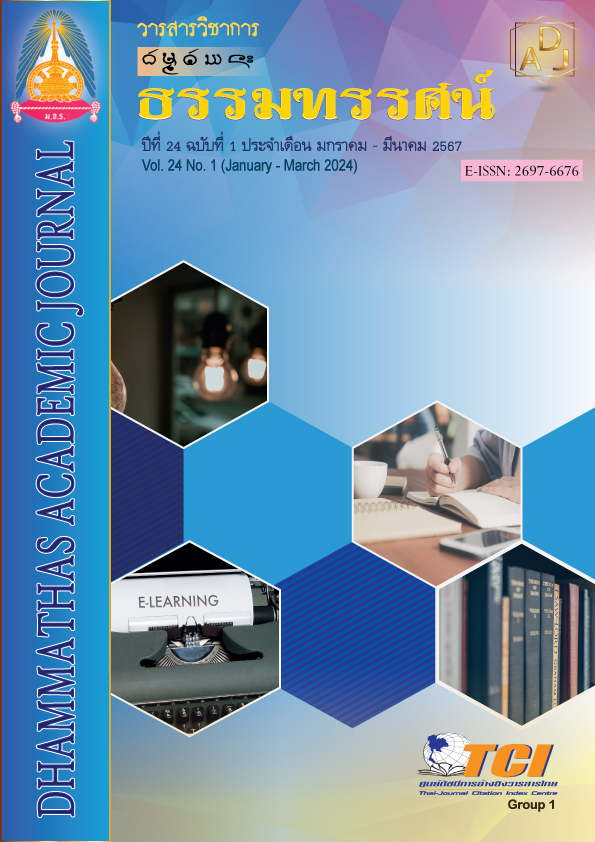Sustainable Community Development for Supporting Natural and Cultural Based Tourism in Chaiya Phum Province
Main Article Content
Abstract
The objectives of this research Plan were 1) to study the potential of tourist sites, 2) to develop tourist routes and activities, and 3) to develop communities for supporting tourism along natural and cultural tourist routes in Chaiya Phum Province. This research was mixed methods as Documentary, Survey, Qualitative, Quantitative and Participatory Action research in carrying out community development activities to support natural and cultural tourist routes. The samples were 800 people by using of questionnaires, the key informants were 110 expert persons by using of in-depth interview forms and conducting community development activities in the Ban Lad Wang Muang community area Nong Bua Daeng District Chaiya Phum Province to develop an area for supporting natural and cultural tourist routes.
The result found that:
1. Natural tourist sites in Chaiya Phum as: 1) Tat Ton National Park 2) Phu Laen Kha National Park 3) Sai Thong National Park and 4) Pa Hin Ngam National Park have potential in highest level. Cultural tourist sites in Chaiya Phum as: Wat Chaiyaphum Phithak (Pha Koeng) and Phra That Chaiyaphum have potential in highest level. Chao Pho Phaya Lae Shrine, Dvaravati Buddha Image of Wat Khon Sawan and Phra Chao Ong Tue (Phu Phra) Wat Sila At have potential in highest level. Thai National History Museum (Swan Boat) of Wat Phaya Lae and Prang Ku have potential in middle level.
2. There are 6 developed natural and cultural tourist routes: 1) a route to pay homage to sacred objects and visit historical sites 2) a route to admire nature on the Phu Laen Kha mountain range 3) a route for sightseeing, paying homage and shopping 4) a route for sightseeing in national parks 5) the route from South to North and 6) the route from West to East. Natural and cultural tourist activities included: 1) paying homage to Buddhist Places 2) paying homage to monuments 3) admiring historical sites 4) traveling, playing and admiring nature and 5) sleeping in a joyful atmosphere.
3. To develop Ban Lad Wang Muang community in Nong Bua Daeng District and develop community products called “Tung Sai” “Tung Yai Maeng Mum” and “Tung Phuang Raya” and develop woven fabric patterns to be unique in Nong Bua Daeng District to support the natural and cultural tourist routes that have been developed which is a network for exchanging knowledge between communities, society, linking and promoting each other to have further development of knowledge in various fields continued to be sustainable.
Article Details

This work is licensed under a Creative Commons Attribution-NonCommercial-NoDerivatives 4.0 International License.
เพื่อให้เป็นไปตามกฎหมายลิขสิทธิ์ ผู้นิพนธ์ทุกท่านต้องลงลายมือชื่อในแบบฟอร์มใบมอบลิขสิทธิ์บทความ ให้แก่วารสารฯ พร้อมกับบทความต้นฉบับที่ได้แก้ไขครั้งสุดท้าย นอกจากนี้ ผู้นิพนธ์ทุกท่านต้องยืนยันว่าบทความ ต้นฉบับที่ส่งมาตีพิมพ์นั้น ได้ส่งมาตีพิมพ์เฉพาะในวารสาร วิชาการธรรม ทรรศน์ เพียงแห่งเดียวเท่านั้น หากมีการใช้ ภาพหรือตารางของผู้นิพนธ์อื่นที่ปรากฏในสิ่งตีพิมพ์อื่นมาแล้ว ผู้นิพนธ์ต้องขออนุญาตเจ้าของลิขสิทธิ์ก่อน พร้อมทั้ง แสดงหนังสือที่ได้รับการยินยอมต่อบรรณาธิการ ก่อนที่บทความจะได้รับการตีพิมพ์References
คณาจารย์มหาวิทยาลัยมหาจุฬาลงกรณราชวิทยาลัย. (2553). สถิติเบื้องต้นและการวิจัย. พระนครศรีอยุธยา: มหาวิทยาลัยมหาจุฬาลงกรณราชวิทยาลัย.
จังหวัดชัยภูมิ. (2564). ข้อมูลจังหวัดชัยภูมิ ด้านการท่องเที่ยว. เข้าถึงได้จาก https://www.chaiyaphum.go.th/page_about/about4.3.php
เดชา บุญค้า. (2539). การวางแผนผังบริเวณ. กรุงเทพฯ: จุฬาลงกรณ์มหาวิทยาลัย.
ธนากร ทองธรรมสิริ. (2563). ศักยภาพของแหล่งท่องเที่ยวชุมชนสามสิบห้องของชาวจีนโบราณ อำเภอเมือง จังหวัดบุรีรัมย์. (วิทยานิพนธ์ศิลปศาสตรมหาบัณฑิต). มหาสารคาม: มหาวิทยาลัยมหาสารคาม.
นิภาวรรณ พุทธสงกรานต์ และคณะ. (2549). ศักยภาพของจังหวัดราชบุรีในการจัดการท่องเที่ยวอย่างยั่งยืน. วารสารศรีปทุมปริทัศน์ ฉบับมนุษยศาสตร์และสังคมศาสตร์, 6(1), 27-37.
พระครูวัชรสุวรรณาทร (ลูกชุบ เกตุเขียว) และคณะ. (2562). ผลิตภัณฑ์ท้องถิ่น: คุณค่าอัตลักษณ์และการสร้างมูลค่าเพิ่มด้วยวัฒนธรรมชุมชน. (รายงานการวิจัย). พระนครศรีอยุธยา: สถาบันวิจัยพุทธศาสตร์ มหาวิทยาลัยมหาจุฬาลงกรณราชวิทยาลัย.
ศิลาวัฒน์ ชัยวงศ์ และคณะ. (2563). การพัฒนาเส้นทางการท่องเที่ยวศักยภาพการท่องเที่ยวศิลปะเชิงสร้างสรรค์ของกลุ่มจังหวัดล้านนา. (รายงานการวิจัย). พระนครศรีอยุธยา: สถาบันวิจัยพุทธศาสตร์ มหาวิทยาลัยมหาจุฬาลงกรณราชวิทยาลัย.
สำนักงานกลางทะเบียนราษฎร์ กระทรวงมหาดไทย. (2565). สถิติประชากรจังหวัดชัยภูมิ. เข้าถึงได้จาก http://www.chaiyaphum.go.th/page_about/about2.1.php
สำนักงานจังหวัดชัยภูมิ. (2564). แผนพัฒนาจังหวัดชัยภูมิ พ.ศ. 2566-2570 กลุ่มงานยุทธศาสตร์และข้อมูลเพื่อพัฒนาจังหวัด. เข้าถึงได้จาก http://www.chaiyaphum.go.th/page_other /Plan_cyp2561-2564.php
สุทธิ เหล่าฤทธิ์ และคณะ. (2545). ประวัติเมืองชัยภูมิ. กรุงเทพฯ: ด่านสุทธาการพิมพ์.
สุดถนอม ตันเจริญ. (2560). การจัดการการท่องเที่ยวโดยชุมชนกับการพัฒนาการท่องเที่ยวอย่างยั่งยืนของชุมชนบางขันแตก จังหวัดสมุทรสงคราม. วารสารท่องเที่ยวไทยนานาชาติ, 13(2), 1-24.
องค์การบริหารการพัฒนาพื้นที่พิเศษ เพื่อการท่องเที่ยวอย่างยั่งยืน (องค์การมหาชน). (2565). ยุทธศาสตร์การยกระดับการท่องเที่ยวไทยให้เกิดประโยชน์ต่อชุมชน. เข้าถึงได้จาก https://www.dasta.or.th
อนุรักษ์ ปัญญานุวัตน์. (2542). แผนปฏิบัติพัฒนาการท่องเที่ยวเชียงราย พะเยา แพร่ น่าน. เชียงใหม่: มหาวิทยาลัยเชียงใหม่.
Yamane, T. (1973). Elementary sampling theory. New Jersey: Prentice-Hall, Inc.

